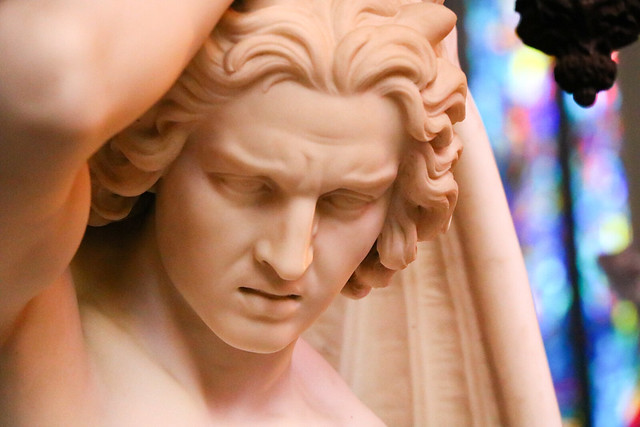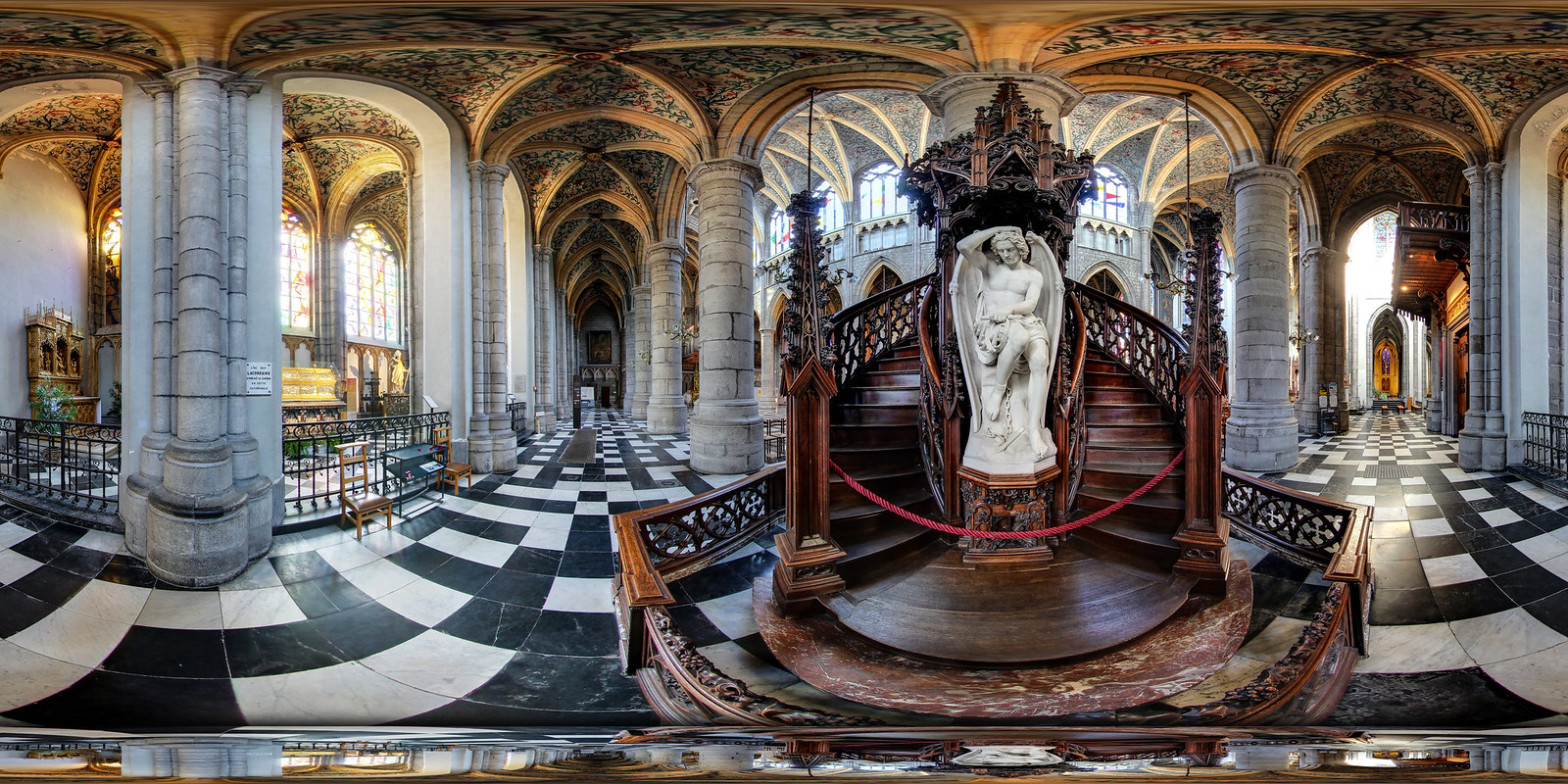1 December 2024
The Devil in the Cathedral: the Lucifer of Liège

The Cathedral of Saint Paul in the Belgian city of Liège was founded in the tenth century. As one might expect from a Catholic place of worship it is full of representations of the men and women from the history – Biblical and otherwise – of Christianity. Yet as the pulpit is approached, a striking white marble sculpture arrests the eye: a beautiful young man in an agony of thought. Which venerable icon of the church might this be? A martyr? A disciple? Or even an angel? It is the latter but this angel is notorious, despised, fallen. It transpires that there is a sinner – and a significant one at that - in the midst of the saints.

Image Credit
It is Le génie du mal (the genius of evil), installed in the cathedral in 1848. The sculpture is generally known in English as, with a nod to the power of alliterative language, the Lucifer of Liège. As in many Christian works of art the subject is surrounded by a mandoria – an oval shape representing the radiance of heavenly clouds which serves to emphasize the overall holiness of those depicted – and so it is with this sculpture. Yet in this case it is a perverse kind of trompe-l'œil. This mandoria is a pair of veiny wings, articulated like those of a bat.
Image Wikimedia
Naked save for a cloth draped over his thighs it soon becomes apparent that as well as having all the best tunes, the devil also has a more than acceptable beach body – despite being situated in the comparative froideur of a cathedral. The lesson is, probably, that beauty on its own does not imply goodness, that one’s judgement should not be blinded by the allure of physical splendor. And the closer the inspection, the more of the subject’s true essence is revealed: the devil is in the detail.
Image Wikimedia
The gorgeous curls of hair reveal a pair of horns; the true nature of the beast revealed Ah, but a single tear runs down his left cheek. The expression is one of horror, perhaps the dread that comes with defeat, perhaps the panic that arrives with the expectation of imminent punishment, perhaps even the terrible ache that comes with guilt and remorse.
Image Credit
At the hip, the devil holds a broken scepter and crown. His hands are chained. The pretender has lost the position he craved, the power he coveted.
Image Credit
And at his chained feet lies other half of the scepter and an apple. There is a bite taken out of this forbidden fruit, reminding us of the treachery of Eden and our own fall and expulsion from paradise. A lesson is certainly intended here but for many it engenders a certain sympathy for the devil which was surely not the intention. In fact, the erotic ambiguity of the sculpture has been the cause of many arguments in the 150 plus years it has been in situ.

Yet there is a surprise – the génie du mal is a replacement for a sculpture that was considered simply too sublime to represent the devil, too much of a distraction for the local girls who came to gawp at Lucifer instead of listening to sermons. The one we see today was sculpted by Guillaume Geefs and the talent for marble ran in the family as the original commission had gone to his brother, Josef, with Guillaume being responsible for just the pulpit. Josef’s work L’ange du mal (the Angel of evil), was put in place in 1843 and caused uproar immediately. It was removed after just a year. It still survives at the Royal Museums of Fine Arts in Brussels. So, let’s put them side by side so you can decide for yourself which is the most brazen affront to our perceptions of good and evil.
Credit ange Credit genie
Whether or not Guillaume succeeded in reducing the seductive allure of the original is ultimately according to taste. The earlier work certainly shows more flesh and there is rather less devilish iconography about him which (bar the wings) leaves him looking rather more like Adonis than Beelzebub. The replacement refers more fully to the fall of Lucifer and the theme of punishment – not to mention gym membership. Flippancy aside, it does its job with such pathos that for many it remains difficult to fully associate this statue with the embodiment of evil, the fallen angel Lucifer. Perhaps those who held the purse strings at the cathedral should have insisted on something rather more… medieval.

















